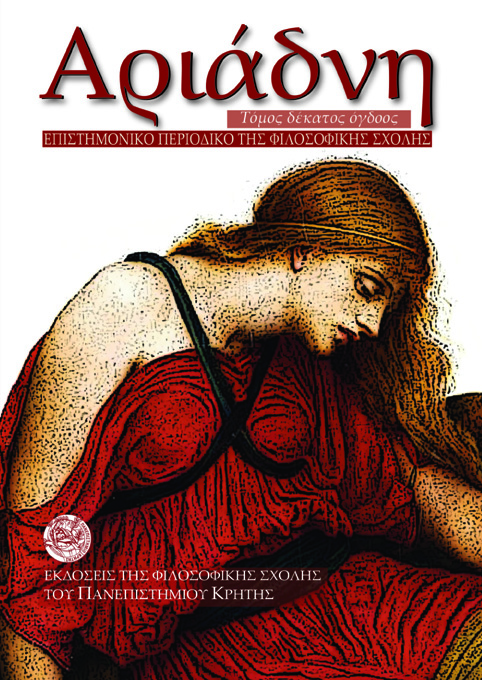Do we know the Minoans 134 years after the first excavations, by Minos Kalokairinos, at Knossos?
DOI:
https://doi.org/10.26248/ariadne.v18i0.365Abstract
134 years after Minos Kalokairinos started excavating at Knossos, and 112 years after Arthur Evans began, Minoan archaeology has reached middle age. Where are we? Where are we going? And where
perhaps should we be going?
In the discovery of early Crete, I discern three periods: from Kalokairinos till World War I; between the wars; and everything thereafter up till now. The first period was marked by an extraordinary number of major excavations, most notably at Knossos where Evans and Duncan Mackenzie moved tonnes of earth and worked hard to make sense of their findings and establish the nine-part Minoan system, which still holds today, but is complemented by Nikolaos Platon’s palatial system. The second period saw, besides the publication of The Palace of Minos (1921-35), the pioneering achievements of the young John Pendlebury in excavating a whole settlement at Karphi, writing a still unduplicated synthesis The Archaeology of Crete (1939), and in combining programmatically diachronic survey of Lasithi with selected excavations of sites of different periods, to produce a full picture of human activity.
Since World War II we have seen a prolonged burst of intensive surveys and fruitful stratigraphic excavations, which have tended to confirm Evans’s scheme, while producing new “palaces” and new palatial buildings, and developing west Crete archaeologically. An unfortunate side-effect, however, is the mass of unpublished material hidden in storerooms. The most important discovery is not archaeological: the decipherment of Linear B as Greek.
A selective review then discusses landscape, pottery, fresco and writing studies, as well as modern interpretative approaches and the recent interest in the historiography of Minoan archaeology.
As for the future, we are still far behind in understanding the social, economic and political contexts of the Minoan civilisation. We need theoretical approaches, and the help of anthropology and local ethnology, provided they are tempered by the realisation that archaeology is an inductive discipline. And we need to promote Minoan archaeology as the serious study it is.
The paper closes with brief discussions of the poem ‘Archaeology’ by W. H. Auden and of two heroes of Minoan archaeology: Minos Kalokairinos and Nikolaos Platon. The answer to the question in the
title is: “Not yet.”
Downloads
Published
How to Cite
Issue
Section
License
Authors retain copyright and grant the journal right of first publication with the work simultaneously licensed under a Creative Commons Attribution-NonCommercial-ShareAlike 4.0 International License that allows others free use of the work for non-commercial purposes as long as the author/s and the journal are attributed properly and the new creations are licensed under identical terms (Creative Commons Attribution-NonCommercial-ShareAlike 4.0 International License).


